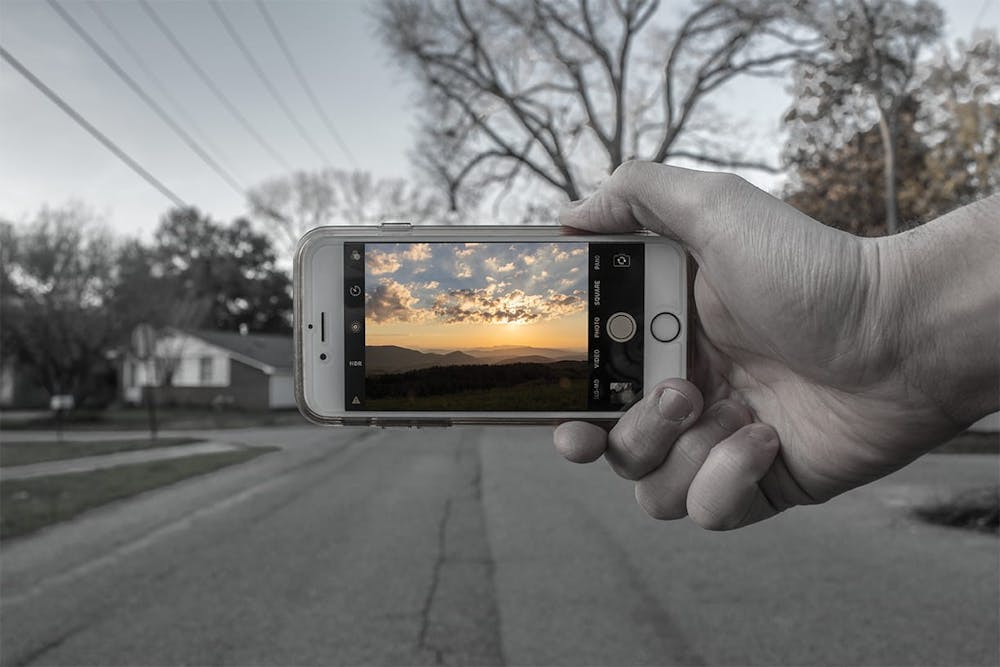Photo by Mark Maddaloni.
Regen – “rain” in English – was a Dutch short documentary created by Joris Ivens and Mannus Franken in 1929. Running at about 14 minutes, it is composed of quick shots of the city and its dwellers in a rainstorm: a cluster of umbrellas seen from the top, raindrops rippling into a puddle, ant-sized people crossing streets and driving cars. What makes Regen special is the way it romanticizes city life, which at the time was seen as grungy and grimy. Ivens and Franken show the beauty of morning light flickering across the water, the sculpture-esque skyscrapers and the drama of normal people going about their business. This is often called poetic documentary, meaning it is subjective and without traditional narrative, focusing on the puzzle pieces instead of the finished picture. They were snapshots of the beautiful everyday, not unlike how we use those “one second of video per day” apps nowadays. What films like Regen showed was that so much of the beauty of life is overlooked and seen as everyday, but that maybe paying attention to life’s “shots” could help us see the “movie.”
A few months ago, someone challenged me to live one day pretending that I was inside a movie, to see every aspect of the world around me as a meticulously crafted setting. In the filmmaking world, “mise en scène” is the arrangement of all the contributing mediums: sound, sets, lighting, costumes, etc. When I looked around as if I were merely on set, everything seemed to have distinct purpose: if someone else created the story and setting I’m walking around in, then there has to be a plot, right? This perspective is one which is especially applicable to students. There’s a reason why there are hordes of movies about college life, because it has the many ups and downs, crushed and realized dreams, messy relationships, seemingly star-crossed failures and eventual self-discovery present in nearly all plots. The “college-to-real-life” experience is a very cinematic one; if it weren’t, then The Graduate, Mona Lisa Smile, Animal House, Good Will Hunting, and 22 Jump Street wouldn’t be around.
Just as a series of shots make up a movie, a series of moments make up a life. When you see your life through a camera lens, each moment leads up to something. Take the first scene of Pulp Fiction: when we meet the couple holding up the diner, then cut to a completely different storyline, we think, “what was the point of that?” – a question that goes unanswered until the last few minutes. In the same way that each prop and piece of dialogue serves a specific purpose in a film, each moment and contributing factor achieves a goal in one way or another. Just like the ups and downs of a character’s journey go towards a net positive, maybe getting rejected from your dream school leads you to discover something much better, or interning for an industry you thought you loved reveals that it isn’t the right path for you. You’re the protagonist, but also being the audience gives you the power to see the fate of these ups and downs. If all scenes, dark or comedic, make the film, then surely all of life’s moments, positive or negative, are leading to some grand finale?
So now I challenge you to put on your camera lens-glasses. Look at the fog in the morning when you walk to class, tripping on the stairs in the Humanities Classroom Building (as we all do), the stop light turning green just as you reach the intersection; see all of these things as just part of the screenplay, or some very good improvisation. If you’re anything like me, you’ll begin to see the plot of it all. Try it, starting tomorrow morning. Maybe it’ll be Oscar-worthy.



